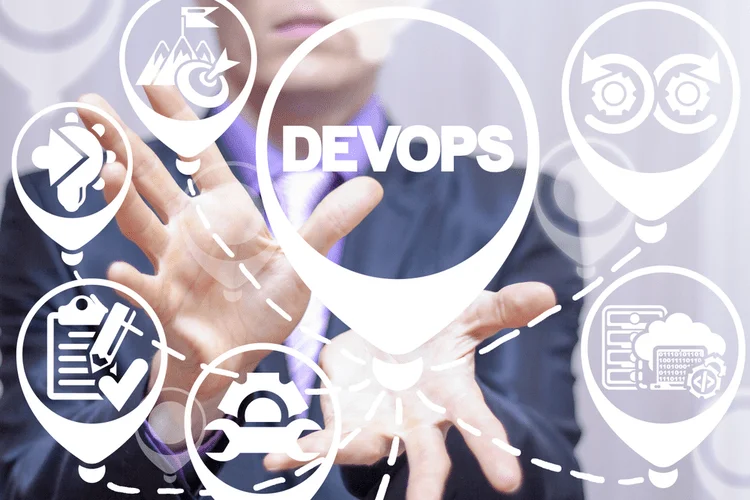Organizations that leaned on this ecosystem had been in a position to rapidly speed up the method in which they delivered functions, but in the end have been nonetheless confronted with guide tasks round automation of the container service itself. From there, the configuration recordsdata are handed over to the container orchestration device, which schedules the deployment. Containers are a great way to package deal your microservices, particularly if you need to build a massively scalable and distributed system that may withstand main disruptions. While they are often utilized alone, combining them delivers agility, flexibility, and portability—essential qualities for the DevOps and multi-cloud ecosystems. Each service in a microservice architecture Container Orchestration has a central database that uses a special technology and may be programmed in a unique programming language.
Evaluate High 10 Service Orchestration Platforms
In 2015, Google donated Kubernetes as a seed know-how to the Cloud Native Computing Foundation (CNCF) (link resides exterior ibm.com), the open-source, vendor-neutral hub of cloud-native computing. Alternatives similar to OpenShift and Docker Swarm could be better suited to specific workloads, while ecosystem tools like Rancher and Portainer make it even easier to work together along with your clusters. GitLab is certainly one of the leading growth platforms for supply control and CI/CD. It also consists of native integration with Kubernetes, offering help for each pull-based GitOps and push-based CI/CD deployments. Apache Mesos offers an easy-to-scale (up to 10,000 nodes), lightweight, high-availability, and cross-platform orchestration platform. It runs on Linux, Windows, and OSX, and its APIs support a quantity of well-liked languages such as Java, Python, and C++.
What’s Container Orchestration?
- Instead of containers, you now need to manage useful resource provisioning for Kubernetes.
- Say you wish to disable this feature throughout all of the totally different companies without delay.
- It makes use of automation tools to create automated workflows that address security incidents and threats.
- That’s why container orchestration platforms have turn out to be a core component of contemporary app architectures.
- Docker accelerates the software growth lifecycle by offering a constant setting from growth to manufacturing.
The platform will nonetheless correctly deal with capacities in the end, but you will notice the greatest “upheaval” when your architecture is also enhanced. Applications’ configurations are sometimes described in YAML or JSON recordsdata, which are exchanged between container orchestration instruments. The container orchestration device depends on composition information to discover out how and where to get container pictures, set up networking between containers, save log information, and mount depository volumes. Mesos is a well-liked selection for running Docker containers in production environments as a end result of it’s straightforward to set up and handle. Still, it requires you to make use of a separate server from your utility container (which can be problematic should you use a number of containers).
Finest Devops Tools To Streamline Growth And Operations
In addition to this, the speed of app deployment can also be elevated with Docker containers. These purposes contain every thing wanted to run a chunk of software program, which incorporates runtime, code, libraries, and system instruments. Containers allow simple scaling of purposes by permitting quick replication and distribution of equivalent container cases, facilitating environment friendly resource utilization. For example, a FinTech utility with a microservice architecture would have the fee, billing, and person onboarding components as impartial companies. Each service would have its own centralized databases and talk with one another and other providers via an API gateway. Containers share resources among the many applications and, by default, will use as much as they want.

Traditional software program development typically involves challenges often recognized as “dependency hell,” the place conflicting or incompatible dependencies can result in deployment points. Docker addresses this problem by encapsulating the applying and its dependencies within a self-contained container. The organizations that scale their Docker infrastructure usually face challenges with advanced networking configurations. The containers are designed to be short-term and can be created or destroyed at any time.

The administrator of the answer uses a GUI or command-line controller on the master node to handle and monitor the container orchestration tool. Containers are self-contained Linux-based applications or microservices bundled with all of the libraries and features they want to run on almost any type of machine. Container orchestration works by managing containers throughout a group of server instances (also called nodes). As we found in our Kubernetes in the Wild research, 63% of organizations are using Kubernetes for auxiliary infrastructure-related workloads versus 37% for application-only workloads.
Every container operating on the same host is impartial and isolated from the others and the host itself. Container orchestration has become indispensable for firms that need to innovate rapidly whereas guaranteeing the steadiness of their services. OVHcloud, with its advanced cloud providers, enables businesses to learn from simplified container management with highly effective tools like Kubernetes. Micro services enable a complex software to be damaged down into numerous unbiased services. Unlike virtual machines (VMs), which include a full working system, containers share the host kernel, making instances lighter, faster as well, and more resource-efficient. This is particularly true in AWS environments, where efficiency has a major impact on the final price of the service.
Ultimately, the right software should align with the organization’s needs and experience stage, helping overcome container orchestration challenges effectively. Containers, lightweight and self-contained units that bundle an software and its dependencies, have gained widespread adoption as a result of their consistency and portability. However, as organizations deploy giant numbers of containers throughout numerous environments, they encounter challenges in managing them successfully. Apache Mesos uses the Marathon orchestrator and was designed to scale to tens of 1000’s of physical machines. Mesos is in production with some massive enterprises similar to Twitter, Airbnb, and Netflix. An utility running on top of Mesos contains a quantity of containers and is referred to as a framework.
Docker is utilized on the edge for managing and deploying functions in Internet of Things (IoT) gadgets. This is very relevant in manufacturing for real-time data processing and analytics. Docker facilitates the adoption of microservices, which permits monetary establishments to interrupt down monolithic applications into smaller, manageable services. This promotes agility, scalability, and ease of maintenance of complicated services and in addition improves total system resilience in consequence. In contrast to digital machines, which require their working system, Docker containers share the host’s operating system.
The software selects the actual node to run every container based on the node’s useful resource constraints, similar to CPU, reminiscence, and so forth, as well as the defined container requirements. Containers can run on virtualized servers, bare-metal servers, and public and private clouds. But managing the deployment, modification, networking, and scaling of a quantity of containers can rapidly outstrip the capabilities of growth and operations groups. Containers enable developers to bundle microservices or functions with the libraries, configuration recordsdata, and dependencies wanted to run on any infrastructure, regardless of the target system surroundings. Container know-how permits organizations to efficiently develop cloud-native purposes or to modernize legacy purposes to benefit from cloud services.
They make it potential to rapidly and easily start up new instances whenever there’s a requirement to scale up as a result of increased demand or visitors. After modifications to installation scripts had side effects on different providers, Trivago made the decision to arrange private cloud infrastructure for their monitoring and performance providers. They wished a solution that had the flexibility to handle stateful, stateless, and I/O intensive jobs, while providing essential isolation between services. Enhance your infrastructure’s availability, scalability, and safety by exploring IBM’s load balancing offerings.
In today’s dynamic IT panorama, where purposes span various environments and experience various workloads, container orchestration provides important advantages. When you utilize a container orchestration device, corresponding to Kubernetes, you will describe the configuration of an application utilizing either a YAML or JSON file. The configuration file tells the configuration management software the place to find the container images, tips on how to establish a community, and the place to store logs.
Development teams use LaunchDarkly characteristic flags to simplify migration use instances, especially in monolith to microservices eventualities. Feature flags give groups a nice deal of control when performing these migrations, each from a characteristic release standpoint, as nicely as consumer concentrating on. They allow you to gradually move components of your software from the old system to the brand new one, quite than make the transition in a large, sweeping style. It works similarly to Kubernetes (more on that below), following the manager/workers model. All the administration and choice making is completed by a swarm manager(s), and containers are run on nodes that joined the cluster.
Docker simplifies utility deployment with light-weight, moveable containers, ensuring consistency, scalability, and efficiency across environments. Containerization requires some additional effort and equipping, but pays dividends. Container orchestration tools can facilitate a neater container experience on your production environments—no matter the place your merchandise are of their respective lifecycles.
Transform Your Business With AI Software Development Solutions https://www.globalcloudteam.com/ — be successful, be the first!